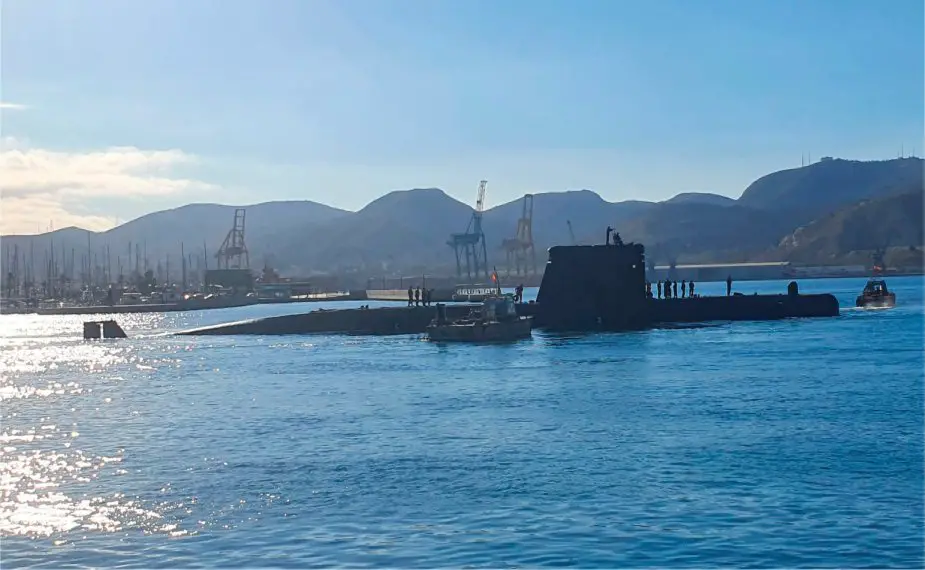Breaking news
Spanish Agosta class Galerna submarine begins sea trials after repairs.
According to information published by Navantia on July 15, 2022, the company and the Navy began the sea trials of the submarine S-71 Galerna, corresponding to the works for the extension of its life cycle, and whose objective is to extend for five more years the operability of the ship.
Follow Navy Recognition on Google News at this link
 Spanish Navy's Agosta class submarine Galerna (Picture source: Navantia)
Spanish Navy's Agosta class submarine Galerna (Picture source: Navantia)
All the tests are scheduled to be carried out during the months of July and August, for a total of approximately eight or nine navigations. The aim is for the ship to be delivered to the Spanish Navy during the month of August.
This first voyage was entirely on the surface, and during it all the services related to the ship's propulsion, navigation, and communications were tested. During the next trip to sea, scheduled for this same week, the ship's static immersion test will be carried out and all the tests prior to the start of the immersion sailings will be completed.
The S-71 submarine, which has been in service since 1983 and was due to end its useful life in 2018, is undergoing an exhaustive refit that will provide the Navy with a fully renovated, updated and operational submarine for the next five years.
About the Agosta class submarine Galerna
Galerna (S-71) is an Agosta-class submarine of the Spanish Navy, currently in service. She was built by Bazán at Cartagena, Spain. Galerna was launched on 5 November 1981 and commissioned on 21 January 1983.
The Agosta-class submarine is a class of diesel-electric fast-attack submarine developed and constructed by the French DCNS in 1970s to succeed the Daphné-class submarines.
The submarines have a length of 67 m (219 ft 10 in), a beam of 6 m (19 ft 8 in), and a displacement of 1,500 long tons (1,524 t) surfaced and 1,760 long tons (1,788 t) submerged.
The Galerna is armed with 20 torpedoes of three different types: ECAN L5 MOD4 (against submarines), ECAN F17 MOD1 (against surface ships) and ECAN F17 MOD2 (against both types of target).
The torpedoes are fired from 4 torpedo tubes, which are equipped with a pneumatic system for rapid loading and launching with a low acoustic signature. The same tubes are used to launch magnetic and acoustic-influenced mines of the MCC 23 type, and with minor modifications could fire anti-surface ship missiles.




























